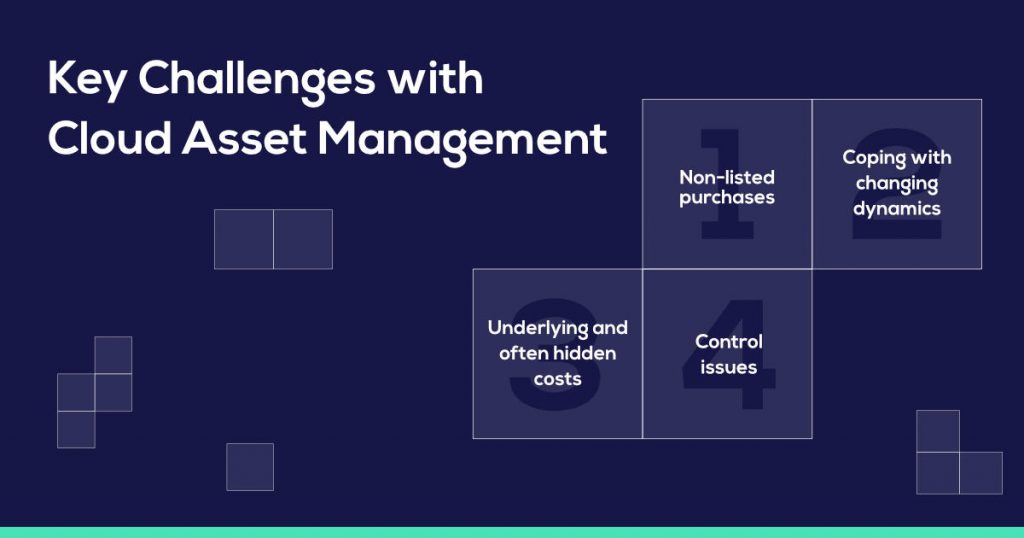Attackers are on a constant lookout for vulnerabilities in the cloud assets of an organization. As organizations add new assets, the implementation often lacks proper access management and thereby makes the infrastructure more susceptible to breaches. To safeguard against these, technology leaders must consider Cloud Asset Management (CAM) to replace or re-implement their solutions. For asset management, organizations must further focus on achieving end-to-end visibility while keeping their endpoints secure and compliant.
Gartner predicts that through 2025, 99% of mishaps in cloud security will be because of the faults originating at an organization’s setup.
It is thus highly recommended that organizations follow the best practices of Cloud Asset Management to mitigate underlying challenges.
Our research at Cloudlytics indicates that most professionals find Cloud Asset Management because of issues like…
- Frequent changes in assets
- Intangibility of assets
- Scalability issues
- Fast deployment that open leaves open backdoors
- Monitoring difficulties due to the absence of specialized tools
Further, cloud hosting involves challenges in maintaining observability into assets. The highly flexible nature of the cloud brings added challenges of access control. For example, organizations face issues such as the doubling of cloud assets as the instances are spun up or down.
Here are some key challenges with Cloud Asset Management (CAM)


1. Non-listed purchases
With the ever-increasing feasibility of deploying cloud services, Software-as-a-Service (SaaS) in particular, the standard IT processes of purchasing these services are often side-stepped. Usually considered as an operational expenditure, rather than capital, cloud services are purchased easily through corporate credit cards and are not often subjected to a thorough approval process and criteria. This leads to the non-involvement of asset management teams in the procurement of cloud services. As a result, they are left unaware of such implementations, thereby posing a risk to the entire infrastructure.
2. Coping with changing dynamics
Cloud adoption is on the rise because of the faster time to market and the agility it offers. Comparatively, traditional asset management practices often involve long lifecycles. This allows organizations time for reconciliations, monitoring, and planning. The challenge for organizations, when it comes to Cloud Asset Management, is thus to identify, design, and deploy reactive methodologies for improved efficiency.
3. Underlying and often hidden costs
Cloud Asset Management is accompanied by different licenses and contracts. This necessitates organizations to build new capabilities and skill sets. While these contracts and licenses are deceptively trivial at face value, numerous underlying, direct and indirect costs are incurred that need to be accounted for. These costs could be on the account of migration, system integration, premium support services, oversubscription, additional storage requirements, service renewals, and more.
4. Control issues
Transparency is a must among cloud service providers when it comes to data backup and security. Organizations with mission-critical or confidential information require full control over their asset management, as a publicly accessible environment will involve intrinsic risks. Having a SaaS setup limits organizations from adapting to underlying platforms or understanding how they are developed.
Overcoming CAM challenges
Here are some simple tips that I believe will help overcome the Cloud Asset Management challenges that we identified above.
1. Mitigating misconfigurations
Addressing gaps in misconfigurations or vulnerabilities is complicated. Organizations must look to implement processes for continuous monitoring and identification of misconfigurations in workloads. By comparing the data with CIS benchmarks, organizations can identify cloud assets that don’t follow the recommended best practices. Implementing continuous interrogation and discovery, which goes hand-in-hand with automation, will enable organizations to maintain security of assets in their cloud environment.
2. Controlling security
Understanding security controls and managing cloud assets with caution is the key. This will ensure that organizations have the know-how of their inventory and make informed decisions on security measures. As organizations develop a better understanding of the cloud assets they possess, identifying gaps in protection and adopting the right tools for securing the same becomes easy.
3. Awareness about workloads
Modern organizations with advanced capabilities in application maintenance know that everything probably involves an API. This is a huge advantage in managing asset inventory. However, this also means high investment while doing this for multi-cloud environments or correlating inventories of cloud assets with the security control data. Effective asset management becomes more achievable when organizations are capable of accessing every resource in their cloud environment.
To Conclude
Cloud Asset Management empowers organizations in utilizing their resources and assets efficiently. It also assists in reducing costs and making informed investment decisions. Partnering with the right cloud provider and using the latest technologies and tools can help organizations in achieving an effective Cloud Asset Management practice.
At Cloudlytics, we have built a world-class tool and an enviable team of experts to help you just do this! For the latest in cloud asset management and compliance solutions, reach out to our experts here








